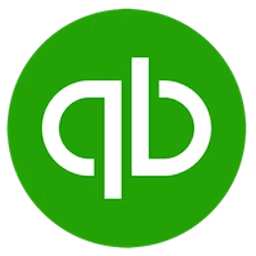For a business to thrive, it must operate efficiently like a well-oiled machine, with every component working in sync toward a common goal. Yet, achieving this efficiency level is not easy—every operation must be standardized, every department synchronized, and every decision rooted in data. This is where enterprise resource planning (ERP) software steps in. Think of it as the central nervous system that integrates disparate functions, such as inventory, sales, supply chain management, and finance, into a cohesive whole.
However, with a wide range of features, choosing the right ERP solution can feel overwhelming. Understanding key features is crucial before you invest. To help you with your search, we’ve determined five key ERP software features based on the ratings given by verified software users. We also include the highest-rated ERP software for each feature.

1. Order management
The order management feature of an ERP system enables warehouse managers and fulfillment staff to oversee and control the lifecycle of sales orders from creation to fulfillment. This feature integrates various aspects of sales, project management, supply chain, inventory, and fulfillment within an organization, standardizing order processing, tracking, and optimization. It typically includes functions such as order entry, processing, inventory management, tracking, invoicing, and customer communication.

What business problems does order management solve?
The order management feature helps warehouse managers and fulfillment staff solve the following challenges:
Order fulfillment delays: Order management helps address the challenge of order fulfillment delays by standardizing the entire business process from order placement to delivery. It provides visibility into the status of each order, allowing managers to track orders in real time and identify any bottlenecks or delays. By automating order processing, assigning tasks to appropriate personnel, and optimizing workflows, order management ensures that orders are fulfilled promptly, improving customer satisfaction and retention.
Inaccurate inventory level: By integrating with inventory management systems, the order management feature tracks inventory in real time, updating stock levels with each transaction. This feature gives warehouse managers a clear picture of stock availability and prevents stockouts or overselling. By minimizing discrepancies between available stock and customer orders, businesses can avoid backorders, reduce fulfillment errors, and improve operational efficiency.
Order errors: Such errors result in dissatisfied customers, increased return rates, and additional business costs. The order management feature helps minimize these errors by standardizing order processing workflows, automating data entry tasks, and providing validation checks at various stages of the order fulfillment process. By implementing order validation rules, such as address verification and product compatibility checks, businesses can reduce the risk of errors and ensure accurate order fulfillment.
How users benefit from order management
Here are some excerpts from the reviewers of order management features describing how it helps them:
“Arrange for the shipment or delivery of orders to customers' specified locations. Provide tracking information to customers so they can monitor the status of their orders in transit and anticipate delivery dates.”
“Allows us to accept/reject orders, contact customers regarding special requests, and delay collection if necessary, whilst keeping the customer updated.”
“Order management feature provides comprehensive and up to date "at a glance" view of orders, with ability to optionally use it to print shipping labels. It means one can manage orders - especially unshipped - in one program despite selling on multiple platforms.”
Top 3 products with the highest ratings for order management
We selected products for this article based on their average ratings between April 2022 - April 2024, which may differ from their current overall average ratings.
Trial/Free Version
- Free Trial
- Free Version
Order management feature rating
Device compatibility
Trial/Free Version
- Free Trial
- Free Version
Order management feature rating
Device compatibility
Trial/Free Version
- Free Trial
- Free Version
Order management feature rating
Device compatibility
2. Billing and invoicing
An ERP software's billing and invoicing feature helps sales managers and accounting teams manage the customer billing process. It integrates with other ERP modules, including sales, production management, and inventory, to generate accurate and timely invoices. This ERP feature helps users generate invoices based on various transactions, such as sales orders, services rendered, or goods delivered. These invoices include the itemized list of products or services, quantities, prices, taxes, discounts, and the total amount due. The billing and invoicing feature often comprises customization options for invoice templates. Users can tailor the layout, branding elements, and content to reflect the company's identity. It simplifies billing processes by automating repetitive tasks. Users can automatically generate invoices based on predefined billing cycles, trigger invoice creation upon completion of specific milestones, and send reminders for overdue payments.

What business problems do billing and invoicing solve?
Billing and invoicing help sales managers and accounting teams solve the following challenges:
Limited financial visibility: Businesses often struggle with limited visibility into their financial transactions, leading to challenges in tracking revenue, monitoring cash flow, and forecasting future earnings. ERP software's billing and invoicing feature provides real-time insights into invoiced amounts, outstanding payments, and revenue trends. Centralizing financial data and generating comprehensive reports enables sales managers and accounting teams to gain a holistic view of the company's financial health, facilitating informed decision-making and strategic planning.
Manual errors: Manual invoicing processes are prone to human errors such as incorrect pricing, duplicate entries, and data inconsistencies, which can result in billing disputes, delayed payments, and customer dissatisfaction. The billing and invoicing feature automates invoice generation and validation, reducing the risk of errors and ensuring accuracy in billing documents. Leveraging predefined templates, automated calculations, and validation checks minimizes the likelihood of mistakes, streamlines workflows, and enhances operational efficiency for sales managers and accounting teams.
Slow invoice processing: Traditional invoice processing methods often involve manual tasks such as data entry, approval routing, and reconciliation, leading to delays in issuing and collecting invoices. The billing and invoicing feature accelerates invoice processing by automating repetitive tasks and streamlining approval workflows. Predefined billing cycles, automated reminders, and electronic payment options expedite the entire billing cycle, from invoice generation to payment receipt. Reducing processing times and improving invoice delivery enhance cash flow management and strengthen customer relationships for sales managers and accounting teams.
How users benefit from billing and invoicing
Here are some excerpts from the reviewers of the billing and invoicing feature describing how it helps them:
“A large section of our business uses this feature of the system and although it's not a finance system as such, we've been able to integrate it with our finance system to allow direct relationship between work done and the associated customer invoices.”
“Billing & Invoicing is a critical feature for me because it helps to easily create a quick invoice for customers and bill their account easily with no issues.”
“Billing & Invoicing works hand in hand with the accounting functions we use on a day-to-day basis. From invoicing and billing to keeping track of accounts payable and receivables, exporting these accounts to our bookkeeping software is streamlined to help save me so much time during the day.”
Top 3 products with the highest ratings for billing and invoicing management
We selected products for this article based on their average ratings between April 2022 - April 2024, which may differ from their current overall average ratings.
Trial/Free Version
- Free Trial
- Free Version
Billing and invoicing feature rating
Device compatibility
Trial/Free Version
- Free Trial
- Free Version
Billing and invoicing feature rating
Device compatibility
Trial/Free Version
- Free Trial
- Free Version
Billing and invoicing feature rating
Device compatibility
3. Inventory management
Inventory management in an ERP solution involves systematically tracking and controlling the business’ inventory levels and stock movements across various supply chain stages, such as procurement, production, warehousing, and distribution. This feature lets inventory managers monitor inventory by providing real-time visibility into stock levels, locations, and movements. Inventory management typically includes inventory tracking, reorder point optimization, demand forecasting, and vendor management to ensure that businesses maintain optimal inventory levels while minimizing carrying costs and stockouts.

What business problems does inventory management solve?
Inventory management helps inventory managers solve the following challenges:
Over- and under-stocking: Businesses need to balance having enough inventory to meet customer demand without accumulating excessive stock that ties up capital and storage space. The inventory management features such as demand forecasting and real-time inventory tracking help businesses optimize their stock levels by providing insights into demand patterns and turnover rates. By doing so, they can avoid overstocking, which minimizes the risk of inventory obsolescence and the associated financial losses.
Stock expiration and obsolescence: Stock expiration and obsolescence pose significant risks to businesses, particularly those dealing with perishable or rapidly evolving products. Inventory management features such as expiration date tracking and inventory rotation algorithms help mitigate these risks by ensuring that items are sold or used before they become obsolete. By accurately tracking expiration dates and implementing strategies, such as first-in-first-out (FIFO) or last-in-first-out (LIFO) inventory rotation, businesses can minimize waste and maximize the value of their inventory.
Inefficient inventory visibility: Businesses with multiple warehouses or sales channels often struggle to maintain accurate visibility into their inventory levels across locations. This lack of visibility can lead to stockouts, missed sales opportunities, and excess inventory in some locations. Inventory management features offer real-time centralized visibility into inventory levels, locations, and movements, enabling businesses to make informed decisions about inventory allocation, replenishment, and distribution.
How users benefit from inventory management
Here are some excerpts from the reviewers of the inventory management feature describing how it helps them:
“Inventory management helps build strong relationships with suppliers to ensure timely delivery of inventory and favorable terms. Negotiate volume discounts, lead time reductions, and favorable payment terms to optimize inventory costs and improve supply chain efficiency.”
“Allows the capability to track large amounts of inventory. Also allows a lot of control for moving and locating inventory based on the user's custom criteria.”
“Inventory management assists you in streamlining all the moving components of your warehouse, from suggesting the ideal stock levels to maintaining an organised and efficient supply chain.”
Top 3 products with the highest ratings for inventory management
We selected products for this article based on their average ratings between April 2022 - April 2024, which may differ from their current overall average ratings.
Trial/Free Version
- Free Trial
- Free Version
Inventory management feature rating
Device compatibility
Trial/Free Version
- Free Trial
- Free Version
Inventory management feature rating
Device compatibility
Trial/Free Version
- Free Trial
- Free Version
Inventory management feature rating
Device compatibility
4. Financial management
The financial management feature of ERP software helps finance managers standardize and optimize financial processes within an organization. This feature includes accounts payable and receivable modules, general ledger management, budgeting, forecasting, cash flow management, and financial reporting. By centralizing financial data and automating repetitive tasks, the financial management feature helps businesses improve accuracy, reduce manual errors, enhance decision-making through real-time insights, ensure regulatory compliance, and drive efficiency and cost savings across the organization. Additionally, this feature integrates with other modules such as procurement, inventory management, and sales to provide a holistic view of financial performance and better alignment of financial strategies with business objectives.

What business problems does financial management solve?
Financial management helps finance managers solve the following challenges:
Inaccurate financial reporting: Businesses rely on accurate financial data to make informed decisions and comply with regulations. Inaccurate reporting can lead to poor decision-making, legal issues, and a loss of investor confidence. Financial management features provide robust reporting capabilities, ensuring financial data is accurate, timely, and compliant with accounting standards. These features automate processes, reduce manual errors, and provide real-time insights, enhancing the reliability of financial reporting.
Inefficient cash flow management: Cash flow is the lifeblood of any business, impacting operations, investments, and growth opportunities. Poor cash flow management can lead to liquidity issues, missed opportunities, and bankruptcy. The financial management feature enables businesses to forecast cash flows, analyze trends, and optimize working capital. This feature helps businesses anticipate and address cash flow gaps, ensuring financial stability and supporting growth initiatives by providing visibility into cash inflows and outflows.
Compliance challenges: Businesses operate within a complex regulatory environment, with numerous laws and standards governing financial reporting, taxation, and disclosure. Compliance failures can result in hefty fines, legal penalties, and reputational damage. Financial management features simplify compliance processes by automating tax calculations, regulatory reporting, and audit preparation. These features integrate with regulatory databases, stay updated with changes in laws, and generate accurate reports, reducing the risk of non-compliance and ensuring adherence to regulatory requirements.
How users benefit from financial management
Here are some excerpts from the reviewers of the financial management feature describing how it helps them:
"Financial Management is essential for tracking revenue, expenses, and profitability. It helps businesses make informed financial decisions, set realistic sales goals, and ensure efficient resource allocation, ultimately leading to improved financial performance and sustainable growth.”
“Cash inflow and out flow report, reconciled bank report, stock report etc are ready available for forecasting and daily fund managements.”
“It keeps all data very secured and connects your financial data with relevant data where you can manage financials in a very professional way.”
Top 3 products with the highest ratings for financial management
We selected products for this article based on their average ratings between April 2022 - April 2024, which may differ from their current overall average ratings.
Trial/Free Version
- Free Trial
- Free Version
Financial management feature rating
Device compatibility
Trial/Free Version
- Free Trial
- Free Version
Financial management feature rating
Device compatibility
5. Reporting/analytics
Reporting and analytics features in ERP software provide business managers with insights into their operations, finances, and performance. These features enable users to gather, organize, and analyze data from various departments and processes, such as finance and sales. These reporting capabilities include ad-hoc report generation, predefined report templates, and drill-down capabilities for deeper analysis. Users can extract data from different modules of the ERP system, including finance, sales, inventory, human resources, and manufacturing. This data can then be transformed into meaningful reports, dashboards, and scorecards, providing stakeholders with a comprehensive view of the business's health and performance.

What business problems does reporting/analytics solve?
Reporting/analytics helps business managers solve the following challenges:
Lack of visibility into business performance: Business leaders often need real-time visibility into key performance indicators (KPIs) and overall business performance. Reporting and analytics features provide comprehensive insights into various aspects of the business, including sales figures, financial metrics, customer behavior, and operational efficiency. By leveraging reporting and analytics features, managers can access up-to-date data and metrics, enabling them to make informed decisions and take proactive measures to drive business growth.
Challenges in identifying trends and patterns: Businesses face difficulties identifying emerging trends, market shifts, and consumer behavior patterns without robust analytical capabilities. Reporting and analytics features employ advanced algorithms and data visualization techniques to analyze large datasets and identify meaningful trends and patterns. Through trend analysis and predictive modeling, businesses can anticipate market changes, identify growth opportunities, and align their strategies accordingly.
Inefficient resource allocation and cost control: Such issues can impact a company's profitability and operational efficiency. Reporting and analytics enable businesses to track resource utilization, monitor expenses, and identify areas of inefficiency or wastage. By leveraging insights from reporting and analytics modules, managers can optimize resource allocation, streamline processes, and implement cost-saving measures, improving overall profitability and financial performance.
How users benefit from reporting/analytics
Here are some excerpts from the reviewers of the reporting/analytics feature describing how it helps them:
"Reporting/Analytics is vital for data-driven decision-making. The feature's ability to provide valuable insights and performance metrics is commendable and can significantly aid in optimizing operations.”
“All kinds of reports and analytics tools help in generating sales reports which are really useful in the entire process of sales. Number of emails, outbound calls, number of people outreached, deals created vs deals closed, are very useful for managers as well as sales people to keep a proper track of their performance as well as their pipeline.”
“Allow the company to have real-time and long-term analytics of our customer services and feedback analysis to understand how our company is doing.”
Top 3 products with the highest ratings for reporting/analytics
We selected products for this article based on their average ratings between April 2022 - April 2024, which may differ from their current overall average ratings.
Trial/Free Version
- Free Trial
- Free Version
Reporting/analytics feature rating
Device compatibility
Trial/Free Version
- Free Trial
- Free Version
Reporting/analytics feature rating
Device compatibility
Trial/Free Version
- Free Trial
- Free Version







